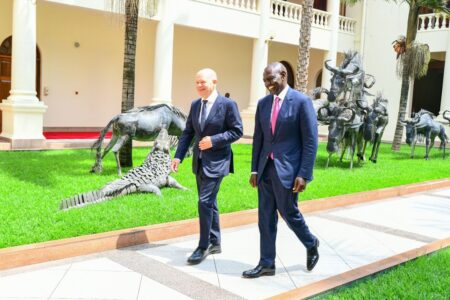The Tanzanian shilling has had an impressive first quarter stifling off the effects of coronavirus threat even amidst travel restrictions and slowed trade.
Up to the close of the quarter, the central bank of Tanzania, the Bank of Tanzania (BoT) said the Tanzanian shilling is strong and has ‘remained resilient against the dollar.’ This means trade, particularly import and export was stable as the value of the shilling muscled up against the dollar.
As matters would have it, by the end of February, the Tanzanian shilling was rather impressive trading at an average rate of Sh2,300.9 for every dollar, a commendable standoff compared to the Sh2,300 that was the trading rate against the dollar just a month before in January of this year.
Further still, despite the slowed trading owing to the coronavirus threat, the indicative foreign exchange market report released by the Bank of Tanzania (BoT) at the end of the quarter (March 31) shows that the Tanzanian shilling traded faithfully at Sh2,278 (buying) and was sold at fairly rewarding Sh2,301.
Granted, the rate value did slightly inch up over the indicative buying and selling rates at the close of last year. At the close of the first quarter in 2019, the Tanzanian shilling was bought at Sh2,276 and was sold at Sh2,299.
In its Monthly Economic Review (MER) report, that covers the country’s economic performance for the period ended February 2020, the Bank of Tanzania reported that the shilling started the year strong and stayed that way all through the valentine month to close February at an unmoved rate, stable with little shift in either direction.
However, in the year long look of things, overall, there was a slight deep of the Tanzanian shilling. It its report, the central bank said that for the year ending February 2020, the Tanzanian shilling did in fact depreciate by 0.1 per cent.
On the other side of the coin, the dollar has taken a few punches owing to caution been taken by investors. Jittery investors became skeptical and opted other currency deals following the US President Donald Trump’s administration choosing to give coronavirus threat a deaf year and ease restrictions.
The US would like to get back to business as usual as the economy stumbles from trade and travel restrictions. However, until there is some positive turn of events with the corona threat, there can be no leeway to maneuver.
Attempts by Trump’s administration to take the cuffs off have scared investors who are now waiting to see the effect that the eased restriction will have. Even the Federal Reserve of the US has tried to give a bit of a jostle to the dollar by increasing supply, but the threat remains real and investors are still skeptical.
Until things ease out and the coronavirus threat eases up, the dollar will continue facing a challenging time. Only this week oil prices fell further scaring investors even more. As a result, oil producers across the US and elsewhere have opted to cut down production, but pundits say it is just too little too late and oil prices will continue to fall.











